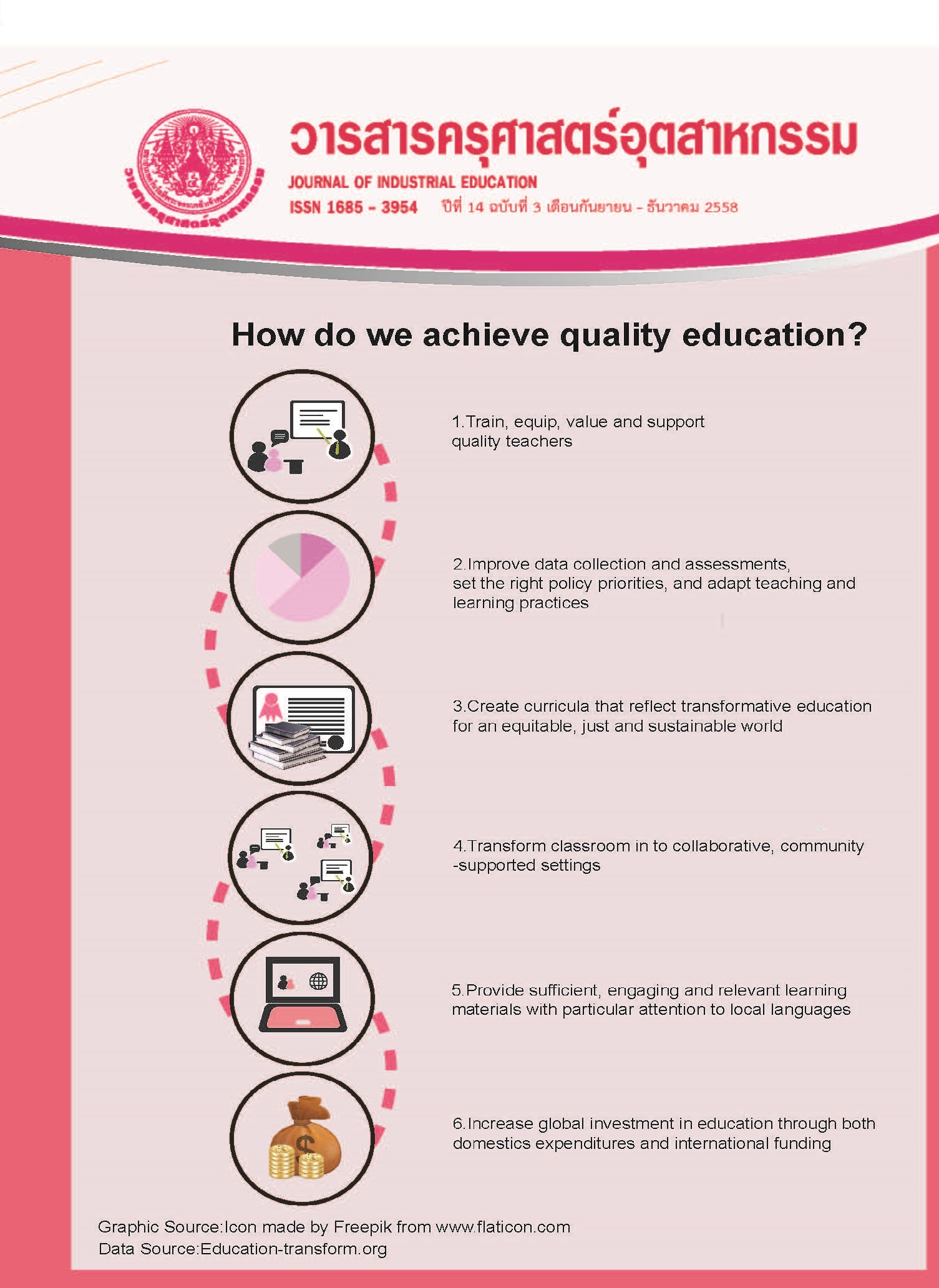Study and Development Clay-Bodies to Apply of Ceramic Products: case study Loei Province
Main Article Content
Abstract
This research studied and developed clay-bodies to apply with ceramic products in case study for Loei Province with objectives as following : 1) to study physical properties and chemical properties of clay- bodies in Phurua District, Loei Province 2) to compare and contrast the mixed ratios of clay-bodies and physical properties affecting the ceramic products patterns developed from clay-bodies in Phurua District, Loei Province and 3) to develop ceramic products patterns from clay-bodies with suitable effecficeness Phurua District, Loei Province for ceramic products.
This research applied the tools, samples and testing processes of clay-bodies for chemical properties by using X-ray Fluorescence spectrometer of Science Department and Service in Bangkok. The processes to compare and contrast the ratios of clay-bodies mix were in suitable properties for producing ceramic products. The group sampling used in this research is the experts in technology ceramics and total of 3 people including of the designer expert to develop the products patterns totally 3 people by using specific group sampling.
According to analyzing clay-bodies in Phurua District, Loei Province, it was found that the stoneware clay- bodies contained averages proportions of of 64.50 percent Silica, Alumina with average proportions of 18.55 percent, and Ferric Oxide with average proportions of 18.69 percent. Besides, it has ratios of clay-bodies suitably with development of ceramic products patterns by comparing and contrasting the ratios of the clay- bodies mix. For example, there are clay-bodies in Phurua District with 80 percent, in Kaolin with 10 percent and in Ball clay with 10 percent. Besides, there are the sample patterns of ceramic products for assessment in development the ceramic products patterns of Phurua District, Loei Province, such as Para Rubber container with most satisfaction level, ( = 4.20, S.D = 0.55).
Article Details
"The opinions and contents including the words in papers are responsibility by the authors."
"ข้อคิดเห็น เนื้อหา รวมทั้งการใช้ภาษาในบทความถือเป็นความรับผิดชอบของผู้เขียน"
References
[2] กฤษดากร เชื่อมกลาง. 2555. ศึกษาและออกแบบเครื่องปั้นดินเผา จากส่วนผสมของเนื้อดินและผงหินภูเขาไฟ. วิทยานิพนธ์ปริญญาครุศาสตร์อุตสาหกรรมมหาบัณฑิต สาขาเทคโนโลยีการออกแบบ ผลิตภัณฑ์อุตสาหกรรม คณะครุศาสตร์อุตสาหกรรม สถาบันเทคโนโลยีพระจอมเกล้าเจ้าคุณทหารลาดกระบัง.
[3] ทวี พรหมพฤกษ์. 2523. เครื่องเคลือบดินเผาเบื้องต้น. กรุงเทพฯ: โอเดียนสโตร์.
[4] สุขุมาล เล็กสวัสดิ์. 2548. เครื่องปั้นดินเผาพื้นฐานการออกแบบและปฏิบัติงาน. กรุงเทพฯ : สำนักพิมพ์แห่งจุฬาลงกรณ์มหาวิทยาลัย.
[5] ไพรจิตร อิงศิริวัฒน์. 2541. เนื้อดินเซรามิกส์. กรุงเทพฯ: โอเดียนสโตร์.
[6] ศักดิ์ชัย เกียรตินาคิทร์. 2537. การออกแบบเครื่องปั้นดินเผา. อุบลราชธานี: สำนักพิมพ์วิทยาลัยครูอุบลราชธานี
[7] ทรงวุฒิ เอกวุฒิวงศา. 2558. หลักการคิดวิเคราะห์เพื่อการออกแบบผลิตภัณฑ์. กรุงเทพฯ: มีน เซอร์วิสซัพพลาย
[8] ธเนศ ภิรมย์การ. 2556. การพัฒนาวัสดุจากพืชวงศ์หญ้าร่วมกับเศษวัสดุจากการเกษตรกรรมเพื่อประยุกต์ใช้ในการออกแบบผลิตภัณฑ์. วารสารครุศาสตร์อุตสาหกรรม, 12(2), น.69-76.

